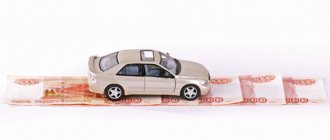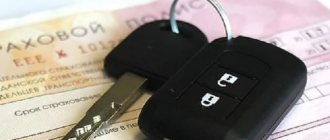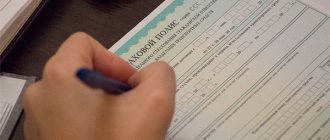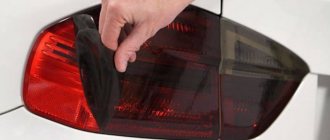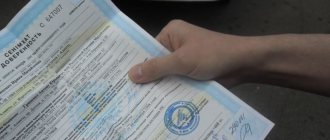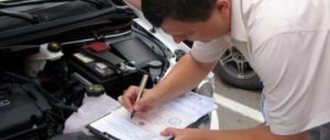Drawing up a VAT return
First, decide on the total amount of tax payments to be refunded. For this purpose, the tax on product sales for the corresponding period is calculated, plus the tax that must be paid when purchasing goods, performing work or providing services.
Important!
If, when preparing a declaration, the total amount of tax paid turns out to be greater, then the tax can be refunded.
To receive a tax refund, you must submit a VAT return by the 20th day of the month following the reporting quarter.
To confirm the reimbursement of VAT from the budget, tax authorities conduct a desk audit of the submitted declaration. During an inspection at a legal entity in accordance with Art. 172 of the Tax Code of the Russian Federation, documents may be required confirming the legality of the use of tax deductions.
To speed up the process, it is better to prepare and submit these documents yourself. Upon completion of the inspection, a report is drawn up in the form approved by the Federal Tax Service.
Taxes and cars - ways to save
Selling a car is legally considered profit. According to the Tax Code of the Russian Federation, profits are subject to a 13 percent tax for residents and 30 percent for non-residents. The amount must be deposited into the Federal Tax Service account as a tax fee no later than July 15, a date that occurs 2 and a half months from the reporting date. The income statement must be submitted by April 30 of the year following the date of receipt of income.
But, as we have already said, when selling a car you can get back part of the tax. To do this, you need to submit the following documents to the tax authorities:
- Certificate 2-NDFL confirming that you regularly pay taxes and transfer contributions to an insurance policy and pension savings;
- Tax return in form 3-NDFL;
- Document on the purchase and sale of a car. You must appear on the document as the seller. Also, the content of the contract must specify the object of sale (for example, its serial numbers, brand name, type of machine, etc.). There must also be a specific transaction amount - for example, 500,000 rubles transferred to the seller through a safe deposit box.
But you only need to return the tax if you owned the car for less than 36 months. If you are the owner of the vehicle being sold with an experience of at least three years, you are completely exempt from paying tax.
Then the question arises, how to calculate the date of purchase of a car. It's simple:
- If you bought a car, the beginning of the period of ownership of the property is considered to be the date of concluding the purchase and sale agreement (provided that this agreement was registered with the State Traffic Safety Inspectorate, in accordance with the current legislation of the Russian Federation);
- If you inherited a car, the beginning of ownership of the property is considered to be the date of death of the previous owner;
- If you received the car under the terms of a fixed-term annuity agreement, the date of taking possession is considered to be the end of the annuity term (if the conditions indicate that the annuity lasts until the death of the lessor, then the beginning of ownership is considered the day of the death of the lessor);
- If you received a car as a gift, it is considered your property from the moment the donation agreement is concluded.
The key condition in this case is that you must prove that the purchase and sale were made with the same car. For example, you need to provide a purchase and sale agreement under which you received a car, and a purchase and sale agreement, as a result of which you sold the car.
If you do not have such papers - for example, they are lost - you should contact the traffic police department for a copy of the certificate-invoice. This is also considered proof that you incurred costs in purchasing the car that exceeded the profit margin.
Just in case, let us clarify that all of the above methods of saving are absolutely legal. They are not considered tax evasion because... opportunities for reducing or completely eliminating tax are included in the Tax Code of the Russian Federation itself.
VAT refund for purchased car
If the tax authority decides to refund the VAT, then the next day a written order is sent to the Federal Treasury authority for territorial subordination.
The Treasury, within five days after receiving the order, returns the VAT amounts and notifies the Federal Tax Service about this.
After this, Federal Tax Service employees are required to inform the taxpayer in writing within five days about the decision made on a full or partial refund or credit of VAT. If a refund is refused, the Federal Tax Service sends a reasoned decision, which can be appealed by the taxpayer in court. This message is received by the head of the legal entity or his representative by mail or against signature.
VAT reimbursement for the purchase of fixed assets
Depending on the region in which the company is registered, it is necessary to make deductions during the year against advances on transport tax (TN). The amount of TN for the entire year is calculated using the formula:
Annual tax = (Engine power) * (Tax rate): (Number of months, how many cars are owned by the company): 12
At the end of the year, the income tax is paid to the tax office minus advance payments, while the income tax is reduced by the amount of the income tax and advance payments (they should be included in the list of other expenses). Accountants report on TN no later than the 1st day of February.
Accounting for a purchased car (example) Organization N bought a car (102 hp) from a third-party company in October. Already in January it was registered with the traffic police, and they immediately began to use it. The price of the car was 330,000 rubles, including VAT in the amount of 30,000 rubles.
Nuances when refunding VAT after purchasing a car
To receive a refund of the paid tax, a legal entity must submit a complete package of documents without violating the deadlines specified in the law.
Important!
All invoices and source documents must be completed correctly, and the company must not have any underpaid taxes. Otherwise, the refund amount will be used to pay off tax debt.
Qualified lawyers specializing in tax legal relations will help you correctly understand all the issues of VAT refund for a purchased car. They will prepare the necessary documents and do everything necessary to receive the money due to the legal entity.
ATTENTION!
Due to recent changes in legislation, the information in this article may be out of date!
Our lawyer will advise you free of charge - write in the form below.
Myth and reality
It turns out that VAT refund when buying a car for personal purposes is a myth, because... an individual does not pay VAT and, accordingly, does not have the right to return it. But legal entities and individual entrepreneurs who are VAT taxpayers can return VAT on the purchase of a car if they use it directly in business activities.
That's all it seems. Don't be afraid of anything, formalize the deal legally and everything will be fine.
Share this post
- Related Posts
- We finally decide on the make and model of the car
- Certificate of acceptance and transfer of the vehicle to the purchase and sale agreement
- Types of loans for car purchases
- We check the title before buying a car
- We check the car body before purchasing
- We check the car for credit and collateral at the bank
Tax deduction from buying a car: is it there or not in Russia?
Many taxpayers appreciated the possibility of returning money that was withheld from salaries in the form of 13% when purchasing real estate or making large expenses (charity).
A car is more likely to be considered a luxury. The Tax Code says that only the seller of the car can return 13%. After selling the vehicle, he must submit a declaration to the inspectorate by April 30 and pay personal income tax by July 15.
Individual entrepreneurs or other legal entities can return VAT for the purchase of a car.
For reference! If the tax service refuses to return funds to a legal entity, it must be sent a written notice of the reasons for the refusal.
How to save 43% of the cost when buying a car
You are the owner of a company or an individual entrepreneur, and you have decided to purchase a car, having, for example, 4 million in revenue. If you are going to buy a car using your salary, then out of these 4 million you will have only 2,268,579 rubles to buy.
Due to dividends - 2,359,322 rubles. And if at the company’s expense, then all 4 million rubles.
At the same time, companies traditionally purchase vehicles on lease, when the initial payment of these 4 million can be 2 million or less (often without overpayment), and the remaining amount is left for the development of their business.
So, the period has come when a car has become extremely necessary, and you, as a financially literate consumer, have decided to think about the method of purchase.
There are several options for purchasing a “four-wheeled friend”, which vary depending on the type of taxation provided for them.
When weighing the pros and cons, you should carefully consider which of these options is right for you.
We tried to make the most of each option. Assuming that in each case the company has 4 million rubles of “free” revenue that you intend to spend on purchasing a car, we calculated how much money you will have left to purchase it after paying all taxes:
Let's take a closer look:
| Options for purchasing a car | |||
| Purchase for an organization with a general tax regime (including leasing) | Due to dividends | Due to salary | |
| Organizational revenue including VAT | 4 000 000 | 4 000 000 | 4 000 000 |
| The organization's revenue without VAT, aimed at the purchase of a vehicle | 3 389 831 | 3 389 831 | 3 389 831 |
| Cost price: | -3 389 831 | 0 | -3 389 831 |
| Depreciation | -3 389 831 | 0 | 0 |
| Salary before personal income tax | 0 | 0 | -2 607 562 |
| Insurance premiums for payroll | 0 | 0 | -782 269 |
| Taxable income under income tax | 0 | 3 389 831 | 0 |
| Income tax 20% | 0 | -677 966 | 0 |
| Tax on dividends 13% | 0 | -352 542 | 0 |
| Personal income tax 13% | 0 | 0 | -338 983 |
| Paid in cash to an individual | 2 467 797 | 2 268 579 | |
| Maximum purchase price of a vehicle (including VAT) | 4 000 000 | 2 359 322 | 2 268 579 |
| Automobile | Toyota Land Cruiser 200, BMW X5, Mercedes GLE or V-Class | Nissan Murano, Hyundai Grand Santa Fe | Mercedes-Benz GLA, Kia Sorento Prime |
| Losses in % | 0% | -41% | -43% |
Let's consider all the options in more detail.
Salary Car: Captain Obvious
Probably the most obvious option. In this case, you, as a business owner, can pay yourself a salary in the amount of the cost of the car you need. It seems that everything is simple - the manager decides to buy a car and buys it himself. The choice is obvious, but there are a few things to think about. The main issue is taxes.
We count: insurance contributions to the pension fund (22%) and the social insurance fund (2.9%), plus compulsory health insurance (5.1%) [To simplify the calculations (since the amount of salary payments may be different - as well as the cost of the purchased car) we do not take into account that for payments of more than 796,000 (to the Pension Fund) / 718,000 (to the Social Insurance Fund) rubles in 2021, reduced insurance premium rates are applied (according to Federal Law No. 212)]. Additionally, you must pay personal income tax equal to 13%. As a result, we have an overpayment of 43% of the cost of the required car.
Pros:
- Obviousness
- All profits are used to pay salaries, so there are no income taxes
- We do not pay dividends, so there is no tax on dividends
Minuses:
- Tax losses 43% of the cost of the car (insurance premiums, personal income tax, VAT)
Summary: It is difficult for us to say in which case this option is preferable. Probably, only if your accounting department is unwilling to deal with transactions, it is more difficult than paying wages (or dividends - see the second option of buying a car). But then why do we need such accounting?
Cars for dividends: a long road to losses
The second scenario is dividends. You pay yourself, as a participant or shareholder of the company, dividends from the net profit of the enterprise. Here you pay income tax (20%) and dividend tax (13%). As a result, as can be seen from the comparative table, the result has become slightly better compared to the option of charging yourself wages - the costs are “only” 41%.
It is also worth considering that in most cases, the organization’s charter specifies a certain frequency of dividend payments, most often once a quarter or once a year. Therefore, you will not always be able to immediately transfer to yourself the amount required to purchase a car - you will have to wait.
Pros:
- You win 5% compared to the option of buying a car with your salary
- No personal income tax, since personal income tax is not charged on dividends received by an individual
- There are no insurance contributions because no salary is paid
Minuses:
- Losses of 41% of the cost of the car
- Funds for purchasing a car are available depending on the frequency of dividend payments
Summary: Well, this option looks a little better, but it's definitely not ideal. You lose money and have to wait until the end of the reporting period. Let's move on.
Auto for a company: is it really that profitable and simple?
How much will a manager overpay if he registers a car for his company? Nothing! There are no taxes or any other contributions that he would be required to pay above the cost of the car.
Moreover, when using a car registered to a company, all costs for gasoline, oil, service, parking, etc. can be attributed to the company's expenses. By thus reducing the tax base, the company receives profit tax savings.
One more aspect. When purchasing a car for a company, VAT on the cost of the car can be offset - thus, the actual cost of the purchase will be equal to the price of the car minus VAT. This makes it possible to save an additional approximately 15% of the price of the car at which an individual would purchase it (at a VAT rate of 18%).
Pros:
- No income tax
- No insurance contributions for payroll
- No personal income tax
- Reducing the tax base by attributing to company expenses costs associated not only with the purchase, but also with the use of a car
- Your lawyer will handle the preparation of the purchase and sale or leasing agreement, not you yourself
Minuses:
- The owner of the car is not you, but the company. But you are the owner of the company, right? This means that the car is still yours and no one else’s.
Summary: No additional costs with minimal labor costs. You are purchasing a car of a higher class than with alternative purchase options. The ideal option, it seems to us.
It is quite possible that there are circumstances when, for some reason, it is more convenient to buy a car with a salary or dividends - but we will classify them as exceptional.
And the most rational option is to buy a car for your company.
It is worth recalling here that legal entities often prefer to purchase a car on lease - after all, this significantly reduces the financial burden on their business and makes the option of buying a car for the company even more profitable.
What advantages does car leasing provide for legal entities?
1. You purchase a car at a discount from the manufacturer.
How it works? Leasing companies have partnerships with car manufacturers and receive discounts on cars, which they share with customers.
As a result, the discount for buyers of popular car models can reach up to 13%, which is quite comparable to the discounts under the recently ended state program of preferential car leasing.
2. When purchasing a car on lease, there is no need to pay the entire cost. The client always has a choice - to make 50% as an advance (overpaying 2-4% in the end - less than the profitability of the business) or to make a minimum advance of 10%.
In Europlan, for certain brands, as part of joint promotions with the automaker, a 5% advance is available (Toyota and Lexus) and 0% advance on Skoda Octavia, and Mercedes (GLE or S) or Jaguar F-Pace - without overpayments.
As a result, you can afford any car with minimal initial investment. This eliminates problems with a lack of funds for large purchases and allows you to purchase expensive assets without withdrawing significant amounts of working capital.
3. You can discuss a more flexible payment schedule with the lessor: equal, decreasing or seasonal, if you agree in advance on the nature of the use of the car. There is the possibility of early repayment or transfer of debt to other companies.
4. Just as when purchasing for an organization, leasing payments are included in the cost of production, which allows you to reduce the tax base for income tax. Calculating depreciation due to the costs of maintaining and repairing a car is a good, and most importantly, legal way to reduce the tax burden.
5. When leasing, VAT paid to the lessor is subject to offset. This way you can reduce your costs by another 18%. Those. the cost of the car, in fact, becomes another 18% less.
6. You do not waste time and money on paperwork at the traffic police, insurance, or car servicing.
Unlike buying a car for cash or on credit, the lessor offers the lessee additional services that help minimize the time and money spent on servicing the car: car registration, insurance, roadside assistance, maintenance, a fuel program, thanks to which you will also save on gasoline.
Thanks to leasing, you buy a car at least 13% cheaper, then save another 18% on VAT refund, significantly save on income tax, do not borrow money and do not withdraw a large amount from working capital.
You simply do business from the first days of the leasing agreement, you and your employees drive new reliable cars and your company operates without downtime.
At the same time, you don’t even think about extending insurance or undergoing maintenance - the lessor can do all this for you, and most importantly, on time. All you have to do is make monthly payments.
Additional information on the Europlan website
Affiliate Material
Source: https://www.e-xecutive.ru/finance/business/1985759-kak-sekonomit-43-ot-stoimosti-pri-pokupke-avtomobilya
Tips and tricks
The main thing for both cases is to correctly collect and prepare the documentation for delivery. A legal entity can buy a car and justify the time spent. But an ordinary taxpayer will have to independently calculate the cost, duration of transport, collect and submit documents to receive 13%.
In this case, there is also an “injured” party - the buyer who will not return his money. But do not despair: perhaps the bill will be adopted.
Dear readers! To solve your problem right now, get a free consultation
— contact the lawyer on duty in the online chat on the right or call: +7 (499) 938 6124 — Moscow and region.
+7 (812) 425 6761 — St. Petersburg and region. 8 (800) 350 8362 - Other regions of the Russian Federation You will not need to waste your time and nerves - an experienced lawyer will solve all your problems! Or describe the situation in the form below:
Tax deduction for the purchase of a car: bought a car - don’t expect a refund
A car is not a cheap pleasure. Even inexpensive modifications require significant costs, and the cost of most new cars is quite comparable to housing prices. In this regard, the question of whether a tax deduction is allowed when buying a car arises quite often. Let's figure out what you can expect when purchasing a car.
This method can be used by any citizen of the Russian Federation. The owner of the car draws up a simple power of attorney - a document that gives the right to another citizen of the Russian Federation, a potential buyer, only to use the car, without transferring ownership of the car. When the seller’s ownership of the vehicle exceeds three years, a full purchase and sale transaction is concluded, with the transfer of ownership of the car. This method of saving is good for relatives, when they can discuss the costs of maintaining a vehicle among themselves.
29 Apr 2021 lawbellex 86
Share this post
- Related Posts
- Benefits for Single Mothers in 2021 in Chuvashia
- How the Family Code of the Russian Federation Defines the Personal Rights and Responsibilities of Spouses
- Balcony coefficient
- Can Labor Veterans of the Moscow Region Ride the Metro for Free?
Basic options for saving
When selling a car, the individual who completed the transaction on the part of the seller receives a profit for his use.
Any income is subject to state taxes of 13% of the amount received. Of course, considering the rather high cost of the cars, the amount is impressive. However, there are ways to save your money from selling your personal vehicle.
USEFUL INFORMATION: Valuation of inherited property
One of the simplest is that when selling a car that has been in use for more than 3 years, taxes are not paid to the treasury. Therefore, in some cases, you can simply take your time and sell the car a little later so as not to pay tax. It is worth considering that in this case, the 3-year period begins to count from the date the individual receives ownership rights, and this should not be confused with the date of signing the contract.
However, in addition to this, there are several other ways to reduce the cost of paying tax duties. Let's take a closer look at them.
Selling without profit
You can make a tax contribution using the sales system without making a profit. In this case, the amount from which the income contribution is paid is calculated as follows: the price for which the car was purchased is subtracted from the amount received from the sale of the property. 13% tax is calculated from this difference. This is what you need to pay.
In cases where the number turns out to be negative, the seller is exempt from paying taxes. And this option is the most likely, since the cost of the machine always decreases during operation. To implement such a scheme, you must have the originals of all documents that confirm the cost of the initial purchase of the car.
Standard deduction
The standard deduction is a good loophole for those who are selling a car for a low price. The fact is that the law contains a clause stating that personal transport valued at less than 250 thousand Russian rubles is not subject to income tax, regardless of the time of its operation.
Of course, if we consider this amount as part of the purchase of a car, it may seem quite small. But sometimes the standard deduction can help avoid overpaying taxes.
In general, this loophole can be used in many cases, the main thing is to know about it and remember in time.
Application of the netting method
The netting method cannot be widely used, since for its use the situation must be quite specific. This method can only be used if in the year you sold the car you also purchased property that is eligible for a tax deduction. If the amount of taxes is equal, then as a deduction you are exempt from paying an income contribution.
To make it easier to understand, we will explain with a clear example. Citizen Grigorenko bought an apartment worth 1.7 million rubles in 2021. At the same time, he is a resident of the Russian Federation, officially works, and has never used his right to a tax deduction. This means that he has the opportunity to take advantage of the deduction. At the same time, in 2021, Grigorenko sold his car worth 1.7 million rubles, which he owned for less than 3 years, which means he must pay 13% tax for receiving income from it.
As you can see, such a situation is quite difficult to imagine in real life. However, there is such a way to save on tax on the sale of a car, and you can use it if it suddenly suits you.
Income tax refund when buying a car on credit
According to paragraphs. 4 paragraphs 1 art. 220 of the Tax Code of the Russian Federation, the opportunity to return funds to pay credit interest exists only for a loan for the purchase or construction of housing.
Refund of personal income tax on a car on credit according to the Tax Code is impossible. This means that all costs of repaying the loan are borne exclusively by the car owner.
So, unfortunately, it is impossible to get a deduction when buying a car on credit or without it. The state can compensate expenses through income tax only for the purchase of an apartment, house or other residential real estate.


